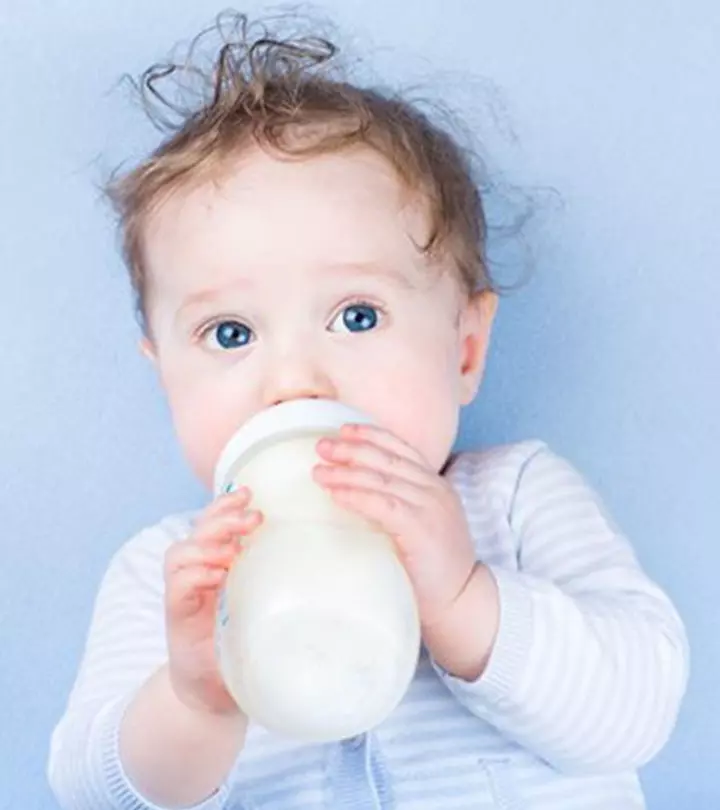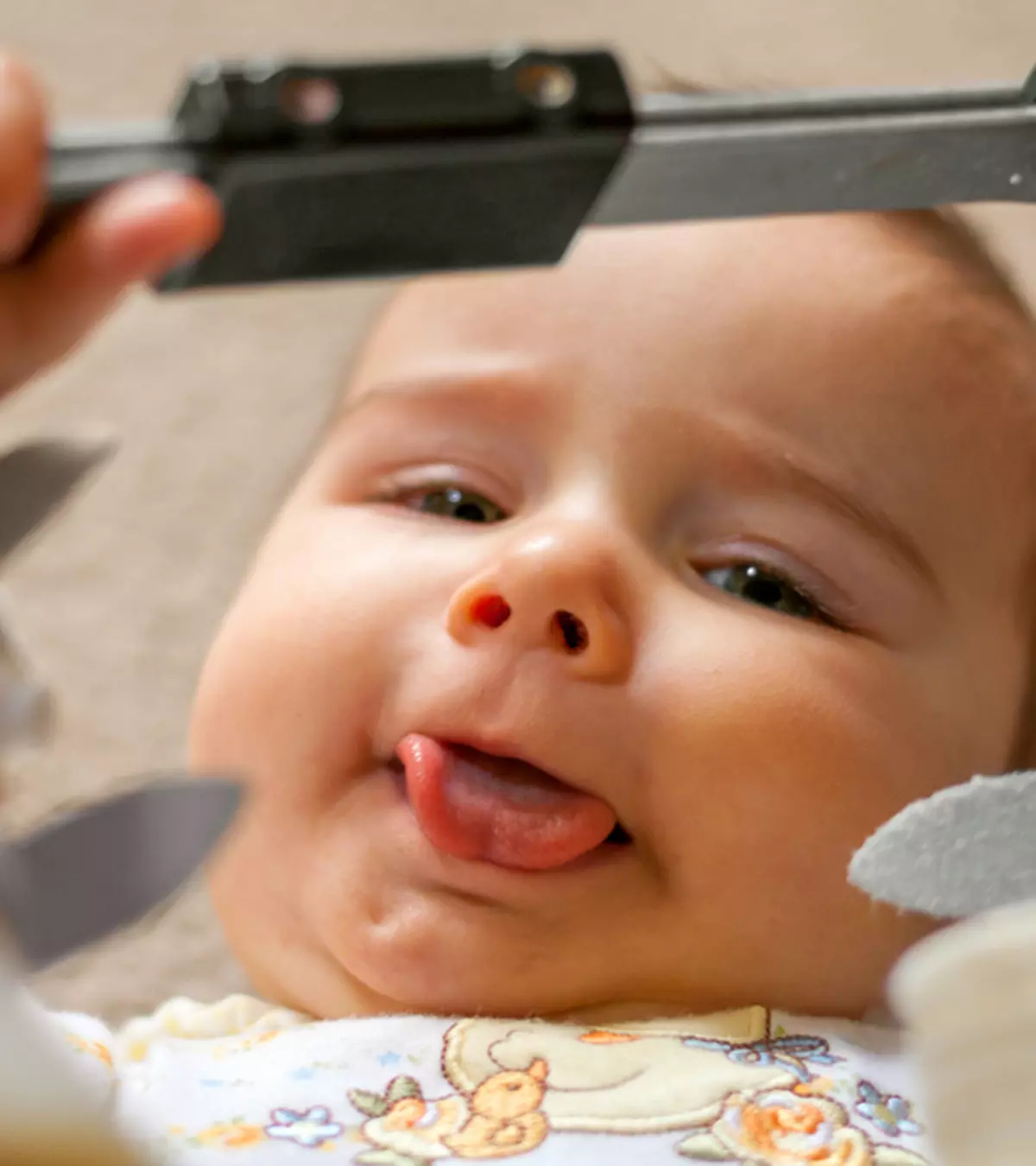

Image: Shutterstock
The first thing that comes to anyone’s mind when they think of baby food is milk. But, if you notice any symptoms soon after your little one drinks milk such as gas, tummy pain, or rashes. You may even wonder what is happening suddenly. However, you’ll be surprised to know that there are two different conditions that have two entirely different triggers for your baby reacting that way to the milk. Here is a low down about how lactose intolerance differs from a milk allergy. This can help you zero in on the reason why your baby is feeling bothered.

What Exactly Is Lactose Intolerance?
Image: Shutterstock
Lactose intolerance is a medical condition where you suffer from digestion-related symptoms like diarrhea, bloating and gas. This happens when the person consumes drinks or foods with lactose. Lactose is the sugar which is naturally available in milk as well as milk products such as ice cream or cheese. There is an enzyme called lactase, which is present in the small intestine, that causes breakdown of lactose. Suppose the enzyme is not able to break down the lactose, it will result in intolerance. And, lactose intolerance is not the same as milk allergy, which is a disorder related to the immune system (1).
Typically, babies might not suffer from lactose intolerance. But, premature babies might not be able to produce an adequate amount of lactase for some period of time post birth. And, it generally improves by itself over some time (2).
Then, there is a medical condition called congenital lactase deficiency, which is known as congenital alactasia too. In this disorder, infants might not be able to break down the lactose present in formula or breast milk. This type of lactose intolerance can result in serious diarrhea. And, for such infants, not having lactose-free formula can result in weight loss and severe dehydration (3).
What Is Milk Allergy?
Image: Shutterstock
As mentioned above, lactose intolerance is more to do with the little one not being able to digest lactose. But, milk allergy occurs when the immune system recognizes dairy stuff as a foreign invader. As a result, it starts attacking with the help of released chemicals such as histamines (4).
For lactose intolerance, you need to look out for symptoms such as gas, stomach pain, and diarrhea. But, when it comes to milk allergy, the resulting symptoms are not just restricted to the digestive tract. In case of a milk allergy, the signs that you need to look out for can range from vomiting and wheezing problems to diarrhea (5).
Here, we bring you several dairy products that you need to avoid:
- Cheese
- Cream
- Butter
- Milk
- Custard
- Yogurt
- Pudding
- Ice cream
There are several foods that contain milk protein from cows. So, you need to check labels before you buy them. And, even if you are eating out, you can ask the staff at the restaurant whether they used cow milk to prepare their food. Here are some of these food items that you need to look out for (6):
- Baked items such as cookies, bread, or cakes
- Cereals
- Chocolate
- Cream candy
- Mashed potatoes
- Sherbet
- Salad dressings
What you can do is substitute the dairy products with something else such as soy or almond milk. Also, you can look for yogurt, cheese, and ice cream that is non-dairy. Also, if your little one is experiencing milk allergy, ask your pediatrician; he/she will suggest you a safe formula.
Knowledge is power. So, now that all of you are aware of what to look out for, don’t get all worked up. Just believe in yourself and keep doing your thing. Good luck, ladies!
Community Experiences
Join the conversation and become a part of our nurturing community! Share your stories, experiences, and insights to connect with fellow parents.














